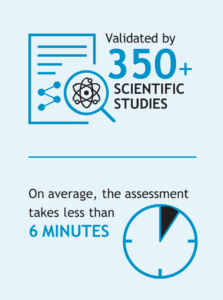Imagine stepping into a new job and being greeted with a flurry of enthusiasm, personalized attention, and a clear sense of purpose. How does that initial experience set the stage for your success in the role?
The first day on the job is more than just a formality; it’s a pivotal moment that can shape your entire trajectory. Research shows that a strong start not only boosts early engagement but also builds the foundation for long-term success. Yet, too often, companies overlook the power of this critical day, resulting in missed opportunities to inspire and motivate new hires.
In this blog, we’ll explore why making the first day extraordinary is not just a nice-to-have but a strategic necessity. Discover how investing in a memorable first day can transform new employees into enthusiastic and productive team members, and learn actionable tips to ensure your first day leaves a lasting, positive impact.
In “The Power of Moments,” Chip Heath and Dan Heath discuss leveraging key moments, such as the first day of a new job or a significant event, to create impactful and memorable experiences. Here are some key insights from their discussion followed by some real world example you could use to get your creative juices flowing to add to your own unique brand:
- Create a Peak Experience:
- Set a Positive Tone: The first day is crucial for setting expectations and shaping perceptions. Make it memorable by creating a positive, engaging, and welcoming experience.
- Involve Emotions: Engaging the emotions of new employees or participants helps to solidify the experience and make it stand out in their memory.
- Build a Strong First Impression:
- Make it Special: Go beyond the basics to make the first day exceptional. This could include personalized touches, warm introductions, and meaningful activities that help people feel valued and excited.
- Focus on Welcoming: Ensure that new hires or participants feel immediately included and supported. This can be achieved through orientation activities, team-building exercises, and clear communication about roles and expectations.
- Design for Impact:
- Plan Key Moments: Identify and plan moments within the first day that will have a lasting impact. This might involve a special welcome event, a unique team introduction, or a significant presentation.
- Involve Key Stakeholders: Ensure that important figures, such as leaders or team members, are actively involved in these moments to reinforce their significance.
- Create Moments of Achievement:
- Celebrate Early Wins: Help new employees or participants achieve small successes early on. This builds confidence and momentum, making them feel productive and valued from the start.
- Communicate Clearly and Frequently:
- Provide Clear Guidance: Ensure that new individuals receive clear instructions and information about what to expect, which helps reduce anxiety and helps them to start effectively.
- Regular Check-ins: Follow up with regular check-ins to provide support, gather feedback, and address any concerns that may arise.
Here are some examples:
Google:
Onboarding Experience: Google’s onboarding process is designed to immerse new hires in the company culture from day one. New employees are given a comprehensive introduction to Google’s mission, values, and tools. They are also paired with a “Google Buddy” who helps them navigate their first few weeks, ensuring they feel welcomed and integrated into their new team.
Why It Works: This approach fosters an immediate sense of belonging and sets a positive tone for the new hire’s experience, aligning with the principles outlined in “The Power of Moments.”
Zappos:
Cultural Immersion: Zappos is known for its unique approach to onboarding, which includes a week-long training session focused not just on job skills but also on the company’s culture and customer service philosophy. New hires are given a thorough introduction to Zappos’ values and are encouraged to fully embrace the company’s culture.
Why It Works: This immersive experience ensures that new employees understand and embody the company’s core values from the start, creating a strong foundation for their success and engagement.
Netflix:
Freedom and Responsibility: Netflix’s first-day experience includes a detailed overview of the company’s culture of “freedom and responsibility.” New hires are given significant autonomy and are encouraged to make decisions and take ownership of their work.
Why It Works: By setting clear expectations about the level of trust and autonomy they will have, Netflix helps new employees feel empowered and valued right from the beginning.
Salesforce:
Welcoming Rituals: Salesforce creates a memorable first day by incorporating rituals and celebrations. New hires are welcomed with a personalized introduction to the team, a gift bag, and a detailed orientation program that includes meeting key stakeholders.
Why It Works: These personalized touches and the formal introduction to key figures help new employees feel appreciated and integrated into the company’s network, enhancing their overall engagement and excitement.
Airbnb:
Immersive Orientation: Airbnb’s onboarding includes a “Belong Anywhere” orientation where new hires experience the company’s culture firsthand. They participate in various activities designed to highlight Airbnb’s core values and mission.
Why It Works: This immersive approach not only provides practical information but also connects new hires with the company’s mission and values, making them feel part of something larger from day one.
By focusing on these strategies, organizations and leaders can turn the first day into a powerful and memorable experience that fosters engagement, builds rapport, and sets the stage for future success.
Optimize your People Strategy
We believe in Better work, Better world. We customize business solutions for our customers.
Want to optimize your people strategy to match your business strategy?
Schedule a discovery meeting with Sixth Sense Solutions today. Call us at 949-241-6690, or you can reach our team via email at [email protected]
Want meaningful insights about you and your leadership style? (Click here)


